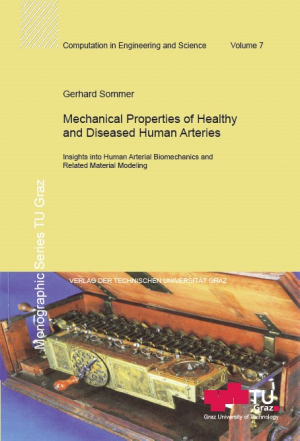Cardiovascular diseases (CVDs), often related to atherosclerosis, are
responsible for the leading cause of death in the developed countries.
The social and economical burden of CVDs remains very high. It is widely
agreed that the mechanical environment and properties of arteries play
an important role in the origin and progression of CVDs.
This
work focuses on the determination of the mechanical properties of
healthy and diseased human arteries, their respective layers and tissue
components. Different types of testing methods have been applied
(uniaxial, extension-inflation, peeling). The obtained experimental data
give valuable implications for vascular physiology, surgery and
clinical applications. Moreover, the data are fitted to novel
constitutive models appropriately describing the mechanical features of
soft biological tissues, which serves as basis for finite element
implementations.






